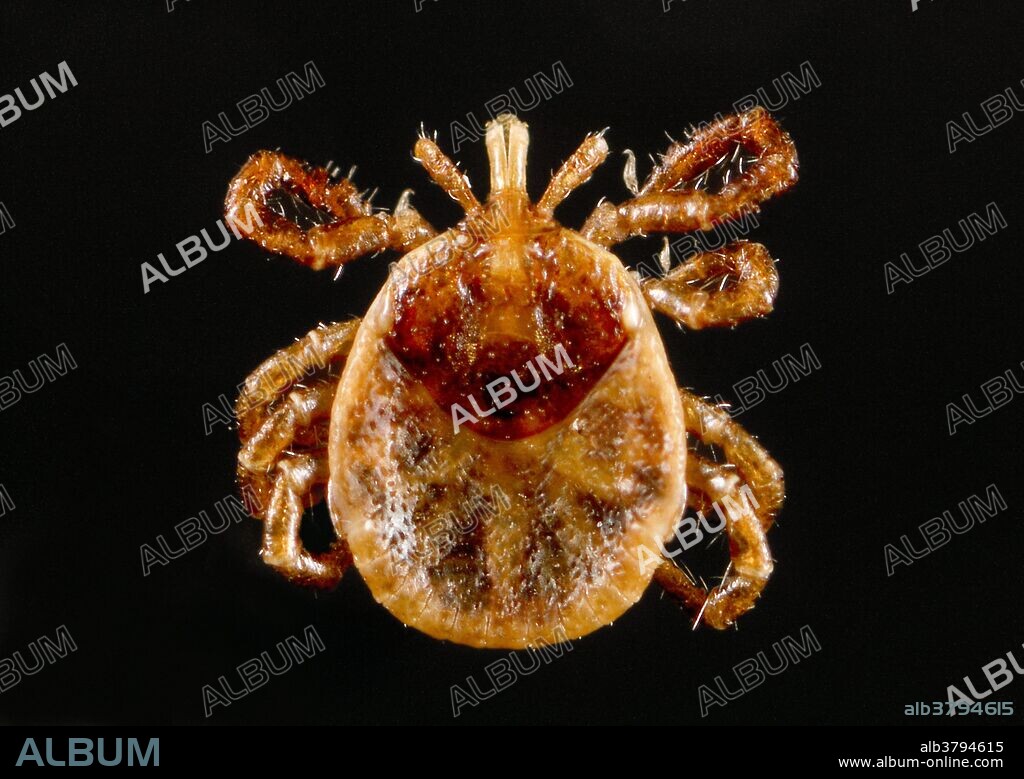alb3794615
Lone Star Tick Nymph

|
Add to another lightbox |
|
Add to another lightbox |



Buy this image.
Select the use:

Title:
Lone Star Tick Nymph
Caption:
Dorsal view of an immature, or nymphal, "lone star tick", Amblyomma americanum. Nymphal ticks are much smaller than adult ticks, and people might not notice a nymph until it has been feeding for a few days. Nymphs are, therefore, more likely than adult ticks to transmit diseases to people. An Ixodes or "hard" tick, A. americanus is found through the southeast and south-central states, and has been shown to transmit the spirochete, Borrelia lonestari, the pathogen responsible for causing a Lyme disease-like rash known as "Southern tick-associated associated rash illness" (STARI). Representatives from all three of its life stages aggressively bite people in the southern U.S. Research indicates that live spirochetes are observed in only 1-3% of specimens. Persons who have been bitten by a lone star tick, A. americanum, and who develop a red, expanding rash with central clearing, known as "erythema migrans", headache or myalgia with fever, should see their physician.
Credit:
Album / Science Source / James Gathany/CDC
Releases:
Model: No - Property: No
Rights questions?
Rights questions?
Image size:
3595 x 2550 px | 26.2 MB
Print size:
30.4 x 21.6 cm | 12.0 x 8.5 in (300 dpi)
Keywords:
AMBLYOMMA AMERICANUM • AMBLYOMMA • ANIMAL • ARACHNID • ARACHNIDS • BLACK BACKGROUND SILHOUETTABLE • BORELLIA LONESTARI • BUG (INSECT) • CARRIER • CARRIERS • DISEASE VECTOR • DISEASE VECTORS • ECTOPARASITE • ECTOPARASITES • EHRLICHIOSIS • IMMATURE TICK • INSECT • INSECTS • INVERTEBRATE • INVERTEBRATES • LONE STAR TICK • LONE STAR TICKS • LONESTAR TICK • LONESTAR TICKS • NYMPHAL TICK • PARASITE • PARASITES • PEST • PESTS • ROCKY MOUNTAIN SPOTTED FEVER • SOUTHERN TICK-ASSOCIATED ASSOCIATED RASH ILLNESS • SPOTTED FEVER • STARI • TICK NYMPH • TICK • TICKS • TINY TICK • VECTOR • VECTORS • ZOONOSES • ZOONOTIC DISEASE • ZOONOTIC DISEASES • ZOONOTIC
 Pinterest
Pinterest Twitter
Twitter Facebook
Facebook Copy link
Copy link Email
Email
